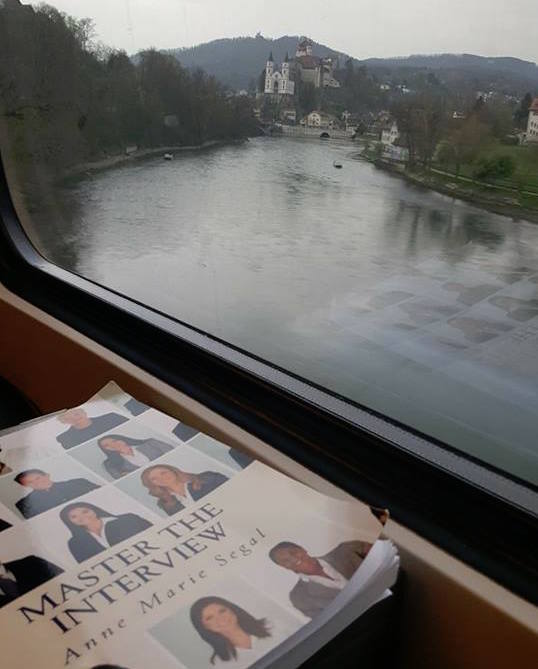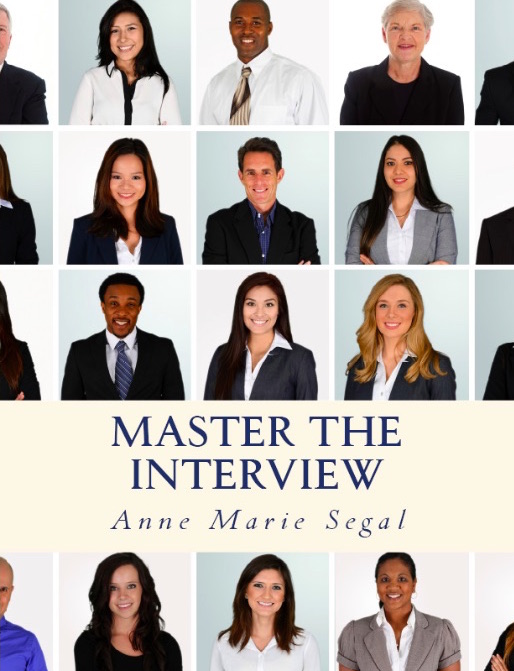MCW INTERVIEW WITH
FRANCISCO LASTA
FRANCISCO LASTA is our Modern Career Warrior for April 2020. This article is part of a series of mid-career retrospective interviews featuring inspiring and innovative professionals at AnneMarieSegal.com.

Francisco is an occupational therapist whose career spans the domains of medicine, design and technology, with a healthy dose of emotional intelligence. Among other projects, he consults on artificial intelligence, virtual reality and telehealth, and his ideas and innovations are directly relevant for the global health crisis we are currently facing.
AMS: Francisco, my first and lasting impression of you is that you are full of light and always smiling. I assume this is what keeps you centered to do such serious, important work.
FL: Thanks. I always try to keep a positive outlook on everything.
Also, beyond a certain skill level and obvious confidentiality obligations, competency as a therapist lies in how well you are able to make people feel comfortable working with you. As I often tell my patients, “I can help you improve your life and do more of the things you want to do, as long as you trust me.”
AMS: Gaining people’s trust must be harder right now, as the global COVID-19 pandemic is heightening people’s insecurities.
FL: It definitely is. In the midst of coronavirus, I’m actually starting to rely less on smiling to communicate and more on other gestures and cues – as well as sharper reading of body language – since most of us are wearing face masks now with our patients.
AMS: What else has changed for you since COVID-19 hit?
FL: I have been keeping track of any updates regarding the virus ever since the outbreak began in Wuhan, but my initial thoughts were that the U.S. health system would do a much better job. It was when I read the article in Medium by Tomas Pueyo that I really became worried.
Even if we have the full support of our organization, this is still a scary time for healthcare workers. Part of what we do invariably involves being up close and personal with our patients. All the patients I see belong to the most vulnerable group in terms of risk of infection. They are older with multiple medical conditions, and some of them live alone.
AMS: We are all in your debt. You and your colleagues.
FL: Thank you.
AMS: Although the coronavirus is front and center in everyone’s minds at the moment, I also wanted to talk about your career in the larger context.
FL: Of course. And a lot of what I am doing in the technology space is actually very relevant in light of the pandemic, although I was working on most of it beforehand.
AMS: Let’s start with how you became interested in your field. Can you give us an overview of the goals of occupational therapy (OT)? I often think of OT as relating to one’s occupation, although I believe you have told me more than once that’s too limiting of a view.
FL: Actually, it does relate to one’s occupation, but occupation doesn’t have to mean a job. The term “occupation” in OT means what occupies you in your life, how you spend your time. Our main focus is to address whatever is limiting someone from being independent in life.
AMS: That makes sense. Can you also tell us about where you work?
FL: I’m at Premier Point Home Health, and my role has a number of different components, such as home health therapy, telehealth program consultations and optimizing the agency’s app capabilities. At the same time, I’m consulting for NeuroPath to develop an AI-based product.
AMS: And the letters after your name in your LinkedIn profile: OTRL CAPS?
FL: One is my OT registration/license (OTRL). And CAPS, stands for Certified Aging-in-Place Specialist. If you think your readers would be interested, you can share more about Aging-in-Place initiatives on the HUD User site at the links I sent you [available here and here].
AMS: And you said that you are focused on working with older adults.
FL: Yes. I have seen a lot of orthopedic patients, people who have had knee and hip replacements. Many patients are in their 60s through 90s and in general decline, some with dementia or history of stroke, and their disability is exacerbated because of age or other issues. When they leave surgery or a skilled nursing facility, we want to make sure they are safe at home with their new disability. As OTs, our role is to identify the key problems and what are causing them, then create a program with solutions, whether it’s improving a particular skill or modifying their environment or the way they do their day-to-day activities.
AMS: What is it like to work with a patient who has dementia? That must be very hard.
FL: It’s particularly challenging with advanced dementia. We work with caregivers in those situations, spending a lot of time training them on how to avoid things like skin breakdown, falls and joint stiffness, as well as general decline. It often becomes overwhelming for caregivers as the condition progresses, because people can lose their ability to exercise multiple bodily functions, beyond what we traditionally associate with diminished mental capacity.
AMS: These issues are more prevalent with patients whose dementia is advanced, I assume.
FL: Right, these patients are often sitting, sometimes even lying down, for extremely long periods of time and don’t necessarily notice the toll it is taking on their bodies.
AMS: That’s something many of us don’t notice often enough, in fact.
FL: It’s true, and even more acute for that population.
AMS: And for the programs you design? What criteria do you use?
FL: During the assessment, we review medical charts, X-rays and lab results and talk to doctors and other healthcare providers who are taking care of the patient. Of course, we also examine the patient and make a cognitive assessment. For one thing, we look at whether they are recovering from a specific weakness or are in a lot of pain.
Just as important, we ask the patient what their priorities are. Usually we work with patients up to six weeks, sometimes more, so we develop a program we can complete in that time that helps them meet the OT needs they have prioritized. I am also piloting a program at Premier Point where I see a patient once a week indefinitely, which is much less costly [in the long run] than sending them back to the hospital with a problem.
AMS: How did you choose to work with the older population?
FL: I grew up with my grandmother back in the Philippines. She was deeply present and engaged in my early life and had a lasting influence on me.
That experience developed my ability to empathize with older adults on a deeper level and helped me communicate with them more meaningfully.
AMS: Which also, I assume, helped you develop that level of trust you mentioned is so important. I remember you mentioning a few years ago that you worked with some pretty well-known celebrities too. That probably was an exercise in trust as well.
FL: Yes, that was at Warren Barr. Some were celebrities, and others were certainly high-profile personalities. It was quite an experience to work with people whose names you would recognize from the media. As you get to know them better, you realize the they are just like any other patient with the same needs and weaknesses. As they aged, they had the same issues, like being able to pull up their pants without a struggle.
AMS: Was it intimidating to work with them?
FL: Not intimidating, but certainly high touch. In the normal course of OT practice, the first time you are assigned a client, you get a face sheet with information about them. But there were times that our director just showed us a photo or mentioned a name, and that was enough. The face sheet became more of a formality at that point.
AMS: Did this experience change how you work as an OT?
FL: I pride myself on giving the same care to everyone, but these were patients with high expectations. I think it was great, because it caused me to really think about best practices, create better habits and really push myself in my standard of care.
AMS: What other strengths would you say that you bring that help your work as an OT?
FL: Being able to adapt to new situations and think “outside the box” are certainly important, especially on the medical side of things. Also programming languages, which was not something I would have expected. I have surprised myself by sitting down for hours and learn SQL and Python, for example, after learning Swift for iPhone.

AMS: Do you think apps are a game changer for OT?
Click HERE to continue reading this article.
For the FULL INTERVIEW, please:
click here (PDF version), or
visit AnneMarieSegal.com/mcw-francisco-lasta (online version).

Technology, the “gig economy” and globalization have irrevocably altered the modern career. Launched in January 2020, MODERN CAREER WARRIORS is a series on AnneMarieSegal.com that explores the lives of professionals leading robust, resilient and multi-dimensional careers.
DEPTH, COURAGE AND INTENSITY radiate from these Modern Career Warriors, who defy the odds and define their own paths. While they may, like the rest of us, feel side-lined or even defeated at times, their inner drive keeps driving them to their own personal best and inspires others to do the same.
Feel free to post a question or “like” this post below, and click here to explore more articles in this series. Thanks!

Anne Marie Segal, founder of Segal Coaching LLC, is an executive coach, resume writer and author of two well-received books on interviewing and career development. She served as a corporate attorney for 15 years, including roles at White & Case LLP and a prominent hedge and private equity fund manager, before launching her coaching practice.
Based in Connecticut not far from New York City, Anne Marie partners with clients internationally on executive presence, impactful communications, graceful transitions and other aspects of professional and personal development.
Article © 2020 Anne Marie Segal. All rights reserved.
Article images: © 2020 Francisco Lasta unless otherwise noted. All rights reserved.
Image of Anne Marie Segal: © 2019 Alejandro Barragan IV. All rights reserved.
No portion of this article may be reproduced without prior written permission from Anne Marie Segal (or the copyright holder of any image above), other than limited quotes that reference this article.













